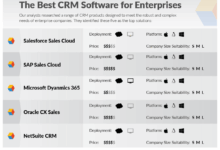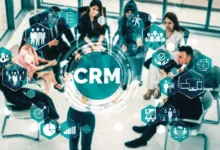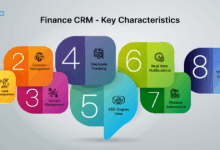HubSpot CRM Pricing: Unveiling The Cost Structure And Features
HubSpot CRM pricing sets the stage for this enthralling narrative, offering readers a glimpse into a story that is rich in detail and brimming with originality from the outset. Exploring the intricacies of pricing tiers, key features, and potential discounts, this overview delves into the world of HubSpot CRM costs with a focus on clarity and insight.
Overview of HubSpot CRM Pricing
HubSpot CRM offers different pricing tiers to cater to the needs of various businesses. Each tier comes with its own set of features and benefits, allowing users to choose the plan that best suits their requirements.
Free Plan
The Free Plan by HubSpot CRM is ideal for small businesses or startups looking to get started with basic CRM functionalities. This plan includes contact management, email tracking, and integration with Gmail and Outlook.
Starter Plan
The Starter Plan is designed for growing businesses that require more advanced features such as deal tracking, email automation, and reporting. This plan also includes phone and email support to assist users with any queries or issues.
Professional Plan
The Professional Plan is suitable for established businesses that need comprehensive CRM tools to manage their sales and marketing activities. This plan offers features like predictive lead scoring, custom reporting, and advanced automation capabilities.
Enterprise Plan
The Enterprise Plan is the most advanced tier offered by HubSpot CRM, catering to large organizations with complex CRM needs. This plan includes all the features from the previous tiers, along with additional functionalities like single sign-on, custom event reporting, and a dedicated account manager.
Discounts and Offers
HubSpot CRM often provides discounts for long-term commitments, such as annual subscriptions. These discounts can help businesses save on their CRM expenses while still enjoying the full range of features and benefits offered by HubSpot CRM.
Factors Influencing HubSpot CRM Pricing
When considering the pricing structure of HubSpot CRM, several key factors come into play that can influence the overall cost for users. These factors can impact the pricing model and determine how much a company will need to invest in utilizing this customer relationship management platform.
Number of Users or Contacts
The number of users or contacts that will be managed within the HubSpot CRM system can significantly impact the pricing. Most CRM providers, including HubSpot, often base their pricing tiers on the volume of users or contacts that will be using the system. As the number of users or contacts increases, the pricing may also increase accordingly. It is essential for businesses to assess their needs and choose a pricing plan that aligns with the scale of their operations and database size.
Additional Integrations or Customizations
Apart from the base pricing structure, additional integrations or customizations can also incur extra charges when using HubSpot CRM. While the platform offers a wide range of features and tools within its standard plans, businesses may require specific integrations with other software or customizations to tailor the CRM system to their unique requirements. These additional services may come at an extra cost, so it is crucial for organizations to consider any supplementary integrations or customizations they may need and budget accordingly.
Comparison with Competitors
When comparing HubSpot CRM pricing with other similar CRM solutions, it’s important to consider the unique pricing structures and advantages that HubSpot offers. The pricing of HubSpot CRM aligns with its robust features and capabilities, making it a popular choice among businesses of all sizes.
Pricing Plans Offered by HubSpot CRM
HubSpot CRM offers a variety of pricing plans to cater to different business needs. These plans include a free version, as well as tiered pricing for more advanced features. Add-on costs are minimal, and there are no hidden fees, providing transparency for users.
Customer Reviews and Feedback
Customer reviews and feedback related to the pricing of HubSpot CRM often highlight the value for money compared to its competitors. Users appreciate the scalability of pricing plans and the ROI potential that comes with choosing HubSpot CRM.
Visual Comparison Chart
A visual comparison chart showcasing the pricing differences between HubSpot CRM and its top three competitors can help businesses make an informed decision. This chart can highlight the cost-effectiveness and features offered by HubSpot CRM in comparison to its rivals.
Return on Investment (ROI) Potential
Evaluating the ROI potential of choosing HubSpot CRM based on its pricing in comparison to competitors is essential. Businesses can analyze the long-term benefits and cost savings that come with investing in a CRM solution like HubSpot.
Cost Management Tips
When it comes to optimizing the usage of HubSpot CRM and lowering costs, there are several strategies that businesses can implement to make the most out of their investment. By maximizing the value of the CRM within the chosen pricing plan, companies can effectively leverage HubSpot CRM for business growth while keeping expenses in check.
Optimizing Feature Usage
- Utilize automation tools: Take advantage of HubSpot CRM’s automation features to streamline processes and save time, ultimately reducing costs associated with manual tasks.
- Focus on essential features: Identify the key features that align with your business goals and concentrate on utilizing them effectively to avoid unnecessary expenses on unused functionalities.
- Regularly review and optimize workflows: Continuously assess and refine your workflows within HubSpot CRM to ensure efficiency and cost-effectiveness.
Tracking and Analyzing Costs
- Utilize reporting tools: Leverage HubSpot CRM’s reporting capabilities to track expenses and analyze costs associated with using the platform effectively.
- Set budget benchmarks: Establish clear budget benchmarks and regularly monitor expenses to ensure they align with your financial goals and expectations.
- Implement cost-saving measures: Identify areas where costs can be reduced or optimized within HubSpot CRM and implement strategies to achieve savings without compromising performance.
Cost-Efficient Integrations
- Compare integration costs: Evaluate the costs of different HubSpot CRM integrations and choose the most cost-efficient options that align with your business needs and budget.
- Seek recommendations: Consult with HubSpot CRM experts or peers in your industry to gather insights on cost-effective integrations that can enhance the functionality of the CRM without breaking the bank.
- Consider open-source solutions: Explore open-source integrations that can provide cost-effective alternatives to proprietary tools while maintaining the desired level of performance.
Pricing Flexibility and Scalability
When it comes to pricing flexibility and scalability, HubSpot CRM offers various options for businesses to adjust their subscription as they grow. This allows companies to align their CRM needs with their business growth effectively.
Scalability Options
- HubSpot CRM provides different pricing tiers based on the size and needs of the business, allowing for easy scalability.
- Businesses can upgrade or downgrade their subscription plan as needed, ensuring they only pay for the features they require.
- Each pricing tier comes with a specific set of features, making it easier for businesses to choose the right plan based on their current needs and future growth projections.
Limitations and Restrictions
- While HubSpot CRM offers scalability, there may be limitations in terms of the number of users, contacts, or storage capacity available in each pricing tier.
- Some advanced features or functionalities may only be available in higher-priced plans, limiting access for businesses on lower-tier subscriptions.
- Scaling down may result in the loss of certain features or capabilities, so businesses need to carefully evaluate their needs before making changes.
Comparison of Features
| Pricing Tier | Features Included |
|---|---|
| Starter | Basic CRM features, email marketing, contact management |
| Professional | Sales automation, reporting, custom automation |
| Enterprise | Advanced analytics, predictive lead scoring, custom reporting |
Additional Costs and Fees
- Businesses may incur additional costs when scaling up, such as fees for add-ons like additional users, integrations, or premium support services.
- It’s essential for businesses to factor in these extra costs when planning to scale up their subscription to avoid unexpected expenses.
Optimizing Subscription
- Businesses should regularly review their CRM usage and needs to optimize their subscription effectively.
- By understanding their growth trajectory and requirements, companies can make informed decisions on scaling up or down their HubSpot CRM plan.
Scenario Analysis
Imagine a scenario where a business is experiencing rapid growth and needs to scale up its CRM subscription. The company should analyze its current usage, future needs, and budget constraints to determine the most suitable pricing tier. By evaluating the additional features and costs associated with each plan, the business can make a strategic decision that aligns with its growth objectives.
Hidden Costs to Consider
When considering the pricing of HubSpot CRM, it is important to be aware of potential hidden costs that may arise during implementation and usage. These costs can catch users off guard if not accounted for in the budgeting process. Here, we will explore some common oversights that could lead to unexpected charges and provide guidance on how to budget effectively to mitigate these hidden costs.
Potential Hidden Costs
- Integration Costs: While HubSpot CRM offers many integrations with other tools and platforms, some integrations may require additional fees.
- Training and Support: Investing in training for your team to effectively use the CRM and seeking support services beyond what is included in the basic package can incur extra costs.
- Data Migration: Transferring data from existing systems to HubSpot CRM can be a complex process that may require the assistance of specialists, leading to additional expenses.
Guidance for Budgeting
- Research and Plan: Take the time to thoroughly research and plan for all potential costs associated with implementing and using HubSpot CRM.
- Allocate Buffer Funds: Set aside a buffer in your budget to account for any unexpected expenses that may arise during the CRM implementation process.
- Regularly Review Expenses: Keep track of your CRM-related expenses and regularly review your budget to ensure you are staying within your financial limits.
Customer Reviews on Pricing
Customer feedback plays a crucial role in understanding how users perceive the pricing of HubSpot CRM. It provides valuable insights into whether customers find the different plans worth the investment and if they are satisfied with the pricing structure overall.
Common Sentiments on Value for Money
- Many customers appreciate the value they receive from HubSpot CRM, stating that the features and capabilities offered justify the pricing.
- Some users find certain plans to be more cost-effective than others, depending on their specific needs and business size.
- There is a general consensus that the pricing aligns well with the benefits and support provided by HubSpot, making it a worthwhile investment for many businesses.
Customer Testimonials on Pricing
“I’ve been using HubSpot CRM for a while now, and I must say that the pricing is fair considering the level of functionality it offers. It’s definitely helped streamline our sales process.” – John, Sales Manager
“I initially had concerns about the pricing, but after using HubSpot CRM, I can confidently say that it’s been worth every penny. The ROI we’ve seen has been impressive.” – Sarah, Marketing Director
Customization Options
When it comes to HubSpot CRM pricing, businesses have the flexibility to customize their subscription plans to better suit their specific needs. This customization can help optimize costs and ensure that companies are only paying for the features and tools that are essential to their operations.
Tailoring Subscription Plans
- Businesses can choose to add or remove certain features based on their requirements. For example, if a company does not need advanced reporting tools, they can opt for a basic plan without this feature to reduce costs.
- Companies can also adjust the number of user licenses they require, ensuring they are not paying for excess users who do not need access to the CRM platform.
- HubSpot CRM offers the option to include add-ons for specific functionalities, such as email marketing automation or sales pipeline management, allowing businesses to tailor their subscription to their exact needs.
Support and Training Costs
In addition to the base pricing of HubSpot CRM, users may incur additional costs for accessing support and training resources. These costs are important to consider to maximize the value of the CRM system.
HubSpot Support Packages and Training Programs
- HubSpot offers various support packages ranging from basic email support to premium phone support options.
- The pricing of these support packages varies based on the level of support required and the size of the organization.
- Training programs provided by HubSpot include online tutorials, webinars, and in-person training sessions, which may incur additional costs.
- Users can also opt for customized training programs tailored to their specific needs, with pricing based on the level of customization.
Value of Investing in Support and Training
Investing in support and training for CRM users can significantly enhance the user experience and ensure optimal utilization of the CRM system.
- Access to dedicated support can help resolve issues quickly, minimizing downtime and maximizing productivity.
- Training programs can empower users to leverage advanced features of the CRM, leading to better insights and improved decision-making.
- Well-trained users are more likely to adopt the CRM effectively, leading to increased ROI and overall satisfaction with the system.
Pricing Transparency
In today’s competitive CRM market, pricing transparency plays a crucial role in building customer trust and driving decision-making. Customers expect clear and upfront pricing information to make informed choices and avoid any surprises down the line.
Evaluation of HubSpot CRM Pricing Transparency
When it comes to HubSpot CRM pricing, the company is known for its transparent pricing model. They clearly outline their pricing tiers and the features included in each plan on their website. Additionally, HubSpot does not have any hidden fees, providing customers with a straightforward pricing structure.
Comparison with Competitors
Let’s compare the pricing structures of HubSpot CRM with two other leading CRM platforms – Salesforce and Zoho CRM.
| CRM Provider | Pricing Tiers | Features Included | Additional Costs |
|---|---|---|---|
| HubSpot CRM | Starter, Professional, Enterprise | Contact management, email tracking, reporting | No hidden fees |
| Salesforce | Essentials, Professional, Enterprise | Sales automation, forecasting, analytics | Additional costs for add-on features |
| Zoho CRM | Standard, Professional, Enterprise | Workflow automation, AI assistant, analytics | Potential costs for integrations |
Impact of Hidden Fees
Hidden fees can significantly impact customer satisfaction and loyalty in the CRM market. Customers who encounter unexpected costs after signing up for a CRM platform may feel deceived and lose trust in the provider. This can lead to churn and negative reviews, ultimately affecting the reputation of the CRM company.
International Pricing Considerations
When it comes to international pricing considerations for HubSpot CRM, there are several factors that businesses need to take into account to effectively manage pricing strategies across different countries.
Currency Exchange Rates and Taxes
- Fluctuating currency exchange rates can impact the cost of HubSpot CRM for international users, making it essential to regularly monitor and adjust pricing accordingly.
- Taxes in different countries can also affect the final price of the CRM software, requiring businesses to comply with local tax regulations and factor in these costs when setting prices.
Market Research for Competitive Pricing
- Conducting thorough market research is crucial for determining competitive pricing strategies in different countries, taking into consideration local market conditions and competitor pricing.
- Understanding the purchasing power and price sensitivity of customers in various regions helps businesses tailor their pricing to meet market demands effectively.
Localizing Pricing Strategies
- Adapting pricing strategies to align with cultural norms and economic conditions in different regions is essential for international success, as pricing that resonates with local customers can lead to increased sales and customer loyalty.
- Considering factors like pricing perception, willingness to pay, and value proposition can help businesses create localized pricing strategies that resonate with diverse international audiences.
Shipping Costs and Import/Export Regulations
- Shipping costs, tariffs, and import/export regulations can significantly impact international pricing strategies, affecting the overall cost of HubSpot CRM for businesses operating in multiple countries.
- Anticipating and managing these additional costs is crucial for maintaining profitability and competitiveness in the global market, requiring businesses to factor in all related expenses when setting international prices.
Free versus Paid Features
When it comes to choosing between the free version and paid plans of HubSpot CRM, it’s essential to understand the differences in features offered.
Feature Comparison
| Features | Free Version | Starter | Professional | Enterprise |
|---|---|---|---|---|
| Contact Management | Basic | Advanced | Advanced | Advanced |
| Email Tracking | Limited | Advanced | Advanced | Advanced |
| Deal Pipeline | Basic | Advanced | Advanced | Advanced |
| Reporting Dashboards | Basic | Advanced | Advanced | Advanced |
Value of Upgrading
- Upgrading to a paid plan offers advanced features like custom reporting, sales automation, and predictive lead scoring, which are not available in the free version.
- Access to integrations with other tools, priority support, and increased storage capacity are additional benefits of upgrading.
- Real-life examples show how limitations in the free version, such as restricted email tracking or lack of customization options, can hinder productivity and growth.
Testimonial: “Upgrading to the Professional plan allowed us to streamline our sales process with automation and improved reporting, resulting in a significant increase in our conversion rates.” – John, Sales Manager
Pricing Model Evolution
The evolution of HubSpot CRM pricing models has been a dynamic journey, shaped by market trends, customer feedback, and competitive pressures. Let’s delve into the key aspects of this evolution and how it has influenced customer adoption.
HubSpot CRM Pricing Evolution
- HubSpot initially offered a freemium model, providing basic CRM features for free to attract small businesses and startups.
- Over time, HubSpot introduced tiered pricing plans based on the size and needs of businesses, offering more advanced features and support at higher price points.
- Notable changes include the addition of new features like marketing automation and sales acceleration tools, leading to adjustments in pricing to reflect the value provided.
- HubSpot also introduced usage-based pricing for certain features, allowing customers to pay based on their actual usage levels.
Comparison with Competitors
- Compared to its competitors like Salesforce and Zoho CRM, HubSpot’s pricing model is known for its simplicity and transparency.
- While Salesforce offers a complex pricing structure with numerous add-ons and customization options, HubSpot focuses on all-in-one pricing bundles for easier decision-making.
- Zoho CRM, on the other hand, provides a range of pricing plans catering to different business sizes and needs, similar to HubSpot’s approach.
Most Successful Pricing Strategy
- HubSpot’s shift towards tiered pricing based on customer segments and feature sets has been one of its most successful strategies.
- By offering scalable plans with clear value propositions, HubSpot has been able to attract a diverse range of customers and drive adoption across various industries.
Pricing Transparency and Future Recommendations
- HubSpot’s pricing transparency has been a key differentiator, providing clear information on features, pricing tiers, and any potential additional costs.
- For the future, HubSpot could consider introducing more customization options within pricing plans to accommodate unique customer needs without complicating the pricing structure.
Conclusive Thoughts
In conclusion, HubSpot CRM pricing emerges as a pivotal factor in the CRM landscape, shaping businesses’ decisions and strategies. With a keen eye on cost management tips, scalability options, and hidden costs, businesses can navigate the pricing maze with confidence and foresight.




